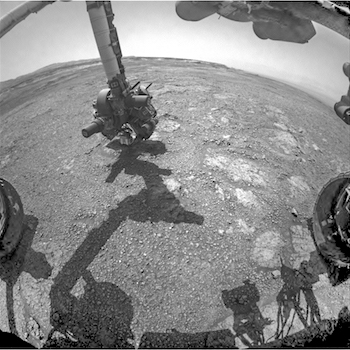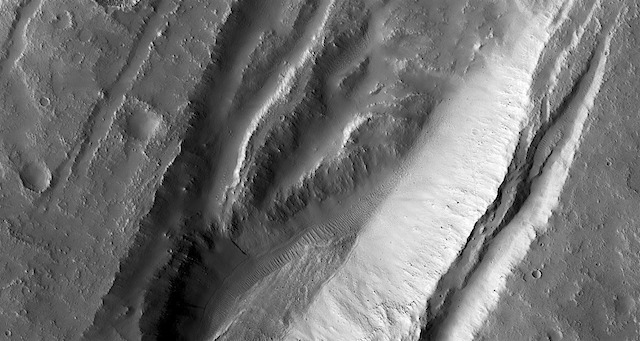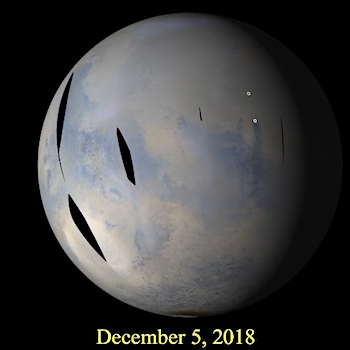NASA Mars Exploration Rover Status Report, December 12, 2018: Mars atmospheric opacity (tau) over the rover site remains at a storm-free range around 1.0.
No signal from Opportunity has been heard since Sol 5111 (June 10, 2018). Opportunity likely experienced a low-power fault, a mission clock fault and an up-loss timer fault. Since the loss of signal, the team has been listening for the rover over a broad range of times, frequencies and polarizations using the Deep Space Network (DSN) Radio Science Receiver.
They have been commanding “sweep and beeps” throughout the daily DSN pass with both right-hand and left-hand circular polarization to address a possible complexity with certain conditions within mission clock fault on the rover. The team has expanded the breath of sweep and beeps commanding, covering more times a day on Mars.
Mars is now in the seasonal period of past dust clearing events for the rover. Since loss of signal, 436 recovery commands have been radiated to the rover. [More at link]
















